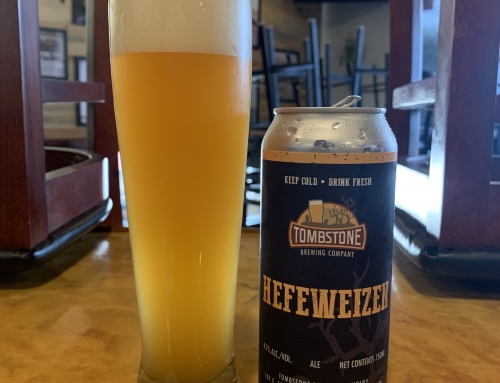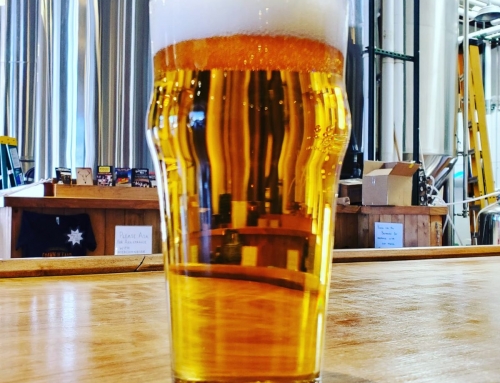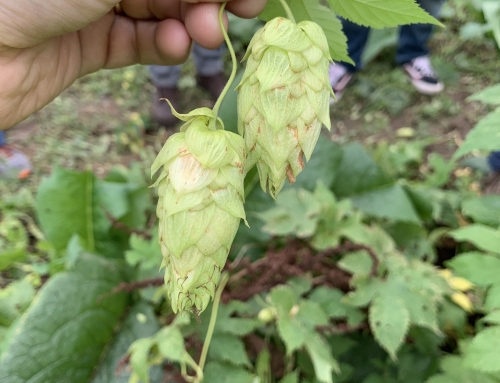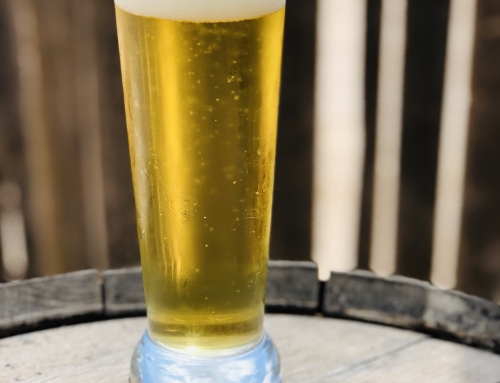What a busy couple of months it has been. Unfortunately, I have not had time to write many blog posts and when I have had time, I felt like I didn’t really have anything to say. At this point, I feel like most people that follow my blogs have read about my brewing philosophies for all the styles we have brewed, so even though we were brewing new beers, there wasn’t necessarily anything new to say about them. Now we are brewing some newer beers that have some major differences from what we’ve become known for. This weekend we canned two new IPAs. At first glance, that doesn’t sound like anything new since we’ve brewed new IPAs and DIPAs every two weeks and we have canned them. This time though we experimented with new hops and after tasting the beers, I’m really anxious to share them with our fans. In fact, I think these might be my two favorite IPAs that we have released.
Both of these new IPAs are brewed with exactly the same hop bills but they feature two different, very distinctive yeast strains. These hops are new to us and probably will be new to most beer drinkers as well. We used Grungeist and Hallertau Blanc which are both German grown hops. One of the things that made this so fun for me is that German hops are rarely used in hoppy American ales. In recent years, German hop growers have been trying to gain traction with US craft brewers by breeding new varieties. Most of the new varieties are bred from Cascade and they feature flavors more similar to what we expect from fruity, citrusy hop varieties in America. Most of the new varieties are great for brewing new age pilsners, kolsches, helles, etc. but they haven’t really gained much traction for the more extreme IPAs and DIPAs that are all the rage in America. Hops like Mandarina Bavaria and Hull Melon have the flavor profiles that we look for in IPAs, but they are too subtle to be featured in American styles in most cases.
Hallertau Blanc was the first German hop that I sampled and thought “This needs to be used in an IPA.” My friend Tom from Hop Head Farms brought me a sample of a pale ale brewed at Three Floyds that used it and I was blown away by the wine like character that the beer had. It was more winey than any beer I’ve had brewed with Nelson Sauvin and the idea of brewing an IPA with it has been burning at me for months now. Grungeist was the second German hop variety that floored me and it was in a beer brewed by Pipeworks. It had an awesome floral aroma, gooseberry, pineapple, and lemon. Both of the hops are also low alpha acid varieties, so it’s easy to get all that flavor and aroma without much bitterness at all.
The more I thought about those hops, the more I wanted to feature them together in IPAs. I also wanted to give brewing with Kveik (Norwegian Yeast that was handed down for generations of brewers) another shot. The idea of having the Sauvignon Blanc character from the Hallertau Blanc, the floral and berry flavors from the Grungeist, and the lemon-lime esters that can be achieved with Kveik, I thought we had an opportunity to brew something with completely new flavors. I also wanted to showcase the difference of Kveik and the English yeast we use in our New England style beers. One thing I always like discussing is that in every single beer we drink, there are approximately 1,000 flavor compounds at varying concentrations. Of those flavor compounds, 900 of them are produced by yeast during fermentation. The English yeast strain gives a notable peach ester and also is known for producing a lot of glycogens which in turn helps to create the soft, creamy mouthfeel. In contrast, the Kveik gives a huge citrusy aroma, ferments a beer very dry, and results in a very crisp, refreshing mouthfeel.
Now that the beers are canned, I couldn’t be happier with how either of them turned out and I love that everyone that tries them will get to see how much influence yeast plays in the flavor of beer. They both have some wine character, pineapple, and berry, but the dry, crisp, lemony qualities from the Kveik make for an incredible contrast to the full bodied, peachy flavor of the English yeast. In addition to that, the more you drink of the beers, the more you begin to realize just how complex the hop flavor really is. The thing that I found most striking was that the terroir influence on the hops really shines. There is a distinctive floral quality that I find in all of the high quality hops grown in the Hallertau region. I remember the first time I noticed that flavor was when I was brewing Pilseners at Blue Pants and it was a distinctive flavor that I found in Mittelfruh, Hallertauer Tradition, and Hallertauer Gold. The same varieties of hops grown in other regions didn’t have it. The flavor works great in these beers and the more you drink, the more it becomes noticeable and since the bitterness level of these IPA’s is so low, you don’t really have to worry about burning your tastebuds out and losing the ability to discern the more subtle flavors.





Your beers are amazing. Wish I was down there to try these two as they sound incredible. Keep it up!
Had a chance to try both in cans. They were both fantastic, but the Kveik version was really special. I hope you have some more releases up your sleeve with that yeast.
Which strains did you use?